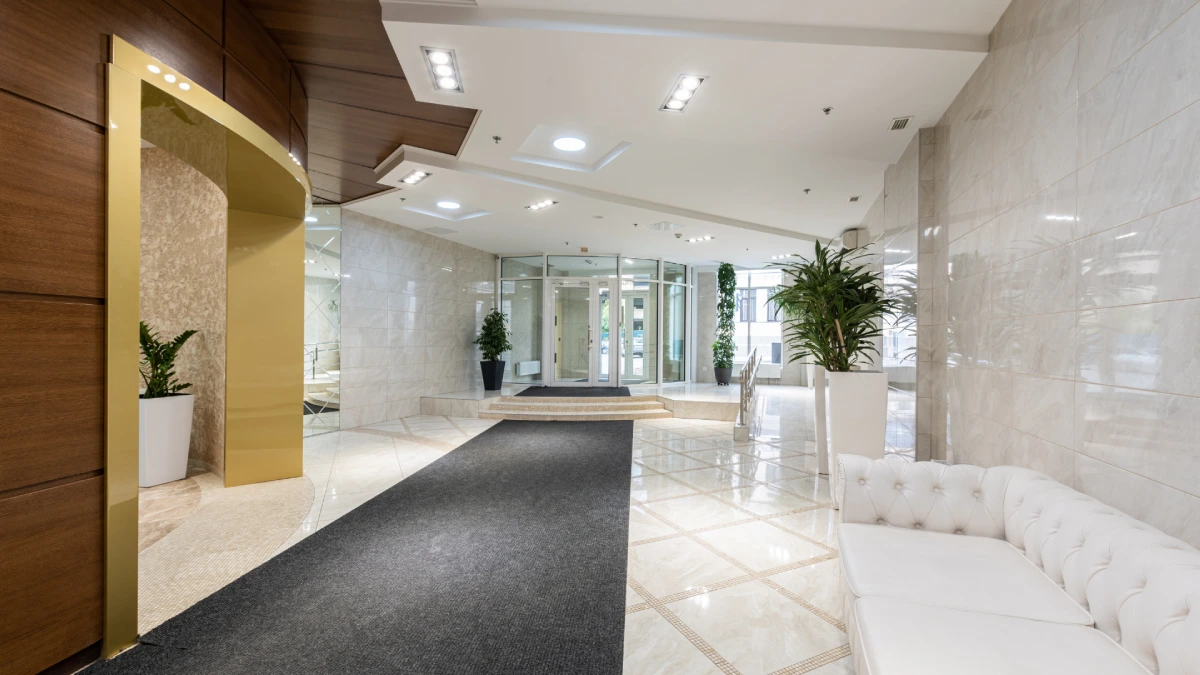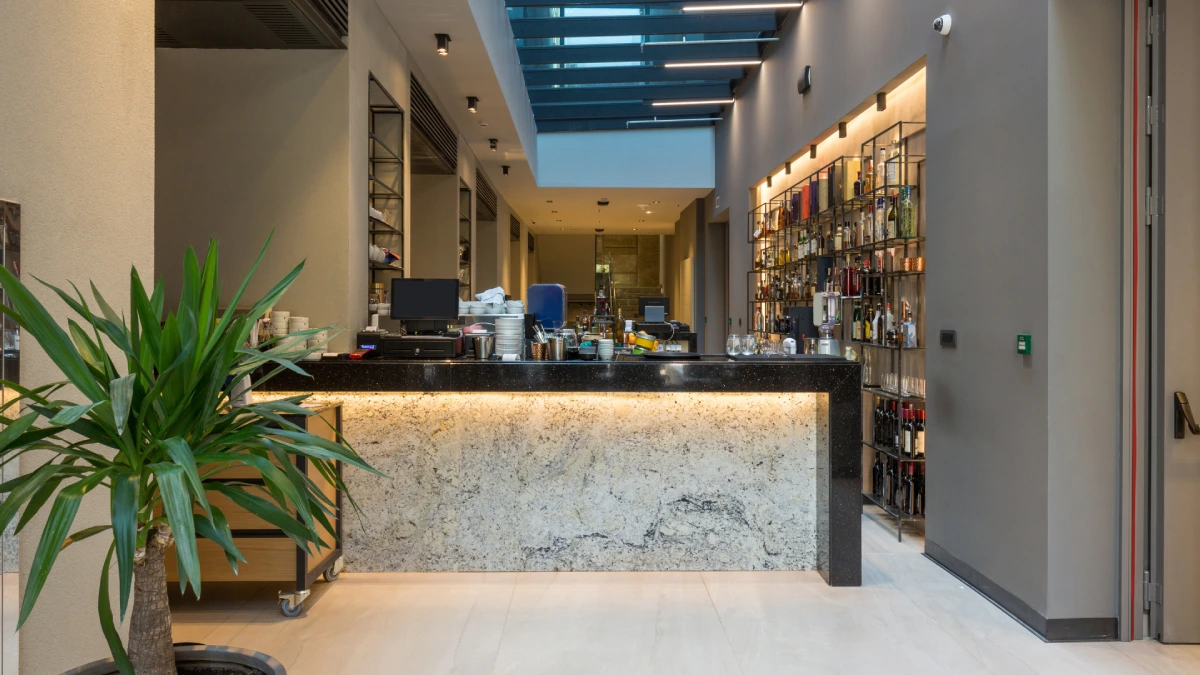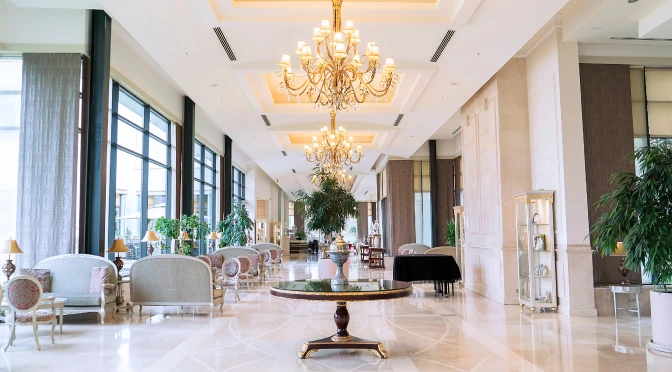Interior hotel design is key in determining the guest experience, including comfort, aesthetic appeal, and functionality. Regardless of whether it is a five-star hotel or a budget hotel, the design factors create the ambiance and impression. Though both hotels will endeavor to have a comfortable stay, the approach in executing the design ideas is dramatically different. There are five important differences between budget-friendly and luxury hotel design.
1. Material and Finishes
One of the most apparent differences between luxury hotel interiors and cost-saving accommodations is material and finish quality. Luxury hotels focus on grandeur, where high-end materials like marble, hardwood, and luxurious fabrics are used to bring an elite environment. The materials not only provide aesthetic value but also durability and sophistication.
Conversely, affordable hotels focus on budget-friendly materials that are functional and low maintenance. Laminates, engineered wood, and minimal textiles are generally used to make a warm yet affordable space. Although these materials are long lasting, they usually do not carry the richness and exclusivity associated with luxury facilities.
2. Design Aesthetics and Detailing
Luxury hotels have the reputation for paying close attention to detail and using innovative design aspects. Every area is specially designed to deliver a unique experience, and this is often done using custom-made furniture, moldings, chandelier lighting, and top-end artwork. The decor is planned around a theme or concept that conveys elegance, opulence, and selectness.

Budget hotels, however, take a more utilitarian and minimalist route. Functionality is the emphasis, with clean, minimalistic designs that are attractive to a wide section of travelers. Rather than elaborate detailing, budget hotels tend to utilise simple colors, plain furniture, and uncomplicated layouts that prioritise ease of maintenance and economy.
3. Space Planning and Room Layout
Another significant disparity in hotel interior design between high-end and low-cost hotels is space planning. Luxury hotels provide large rooms and suites, complete with private living areas, walk-in closets, and opulent bathrooms with soaking tubs and rain showers. The liberal use of space increases the sense of pampering and relaxation.
In contrast, low-budget hotels concentrate on maximising compact areas to include as many travelers as possible with still ensuring convenience. Rooms tend to be smaller in size with clever designs for optimised functionality. Wall-mounted closets, multifunctional furniture, and space-maximising ideas are prevalent features of low-budget hotel design.
4. Technology and Smart Features
Luxury hotels spend a lot on cutting-edge technology to ensure a smooth and enriched guest experience. Smart room control for lighting, temperature, and entertainment systems, keyless entry, and AI-powered concierge services are a few of the advanced features of luxury hotels. Customised in-room experiences like voice-activated automation and high-speed internet access further enrich the guest experience.
Low-cost hotels, integrating technology, aim for affordable and practical smart features. Key card entry, complimentary Wi-Fi, and rudimentary entertainment systems are typical features. The focus is on practicality and not luxury, making sure to provide guests with necessary technological facilities without excess extravagance.

5. Guest Experience and Amenities
Luxury hotel design focuses on creating a singular guest experience via high-end amenities and personalised services. From opulent spas, roof-top pools, and gourmet dining to custom concierge services and VIP lounges, luxury hotels provide an elaborate array of high-end facilities to personalise their guests’ experience.
Value-oriented hotels concentrate on offering functional and basic amenities but with fewer frills. The services include complimentary breakfast, simple yet clean beds, self-help laundry, and public areas. Though the service is simpler in nature, it is still directed towards giving visitors a comfortable and pleasant stay.
Conclusion
The main distinctions between luxury and budget hotel design include material selection, aesthetics, space planning, technological integration, and the guest experience. Luxury hotels provide indulgence and exclusivity through high-end designs, whereas budget hotels emphasise functionality and cost without sacrificing comfort.
Whether you want to create a luxury hotel or budget-friendly accommodation, it is crucial to work with professional interior designers to attain the desired atmosphere and functionality. At Oraanj Interior Design, we are experts in creating outstanding hotel interiors that meet your vision and budget. Our team of professional Interior Designers in London ensures that each project exudes quality, sophistication, and functionality. Get in touch with us today to turn your hotel space into a work of art!


